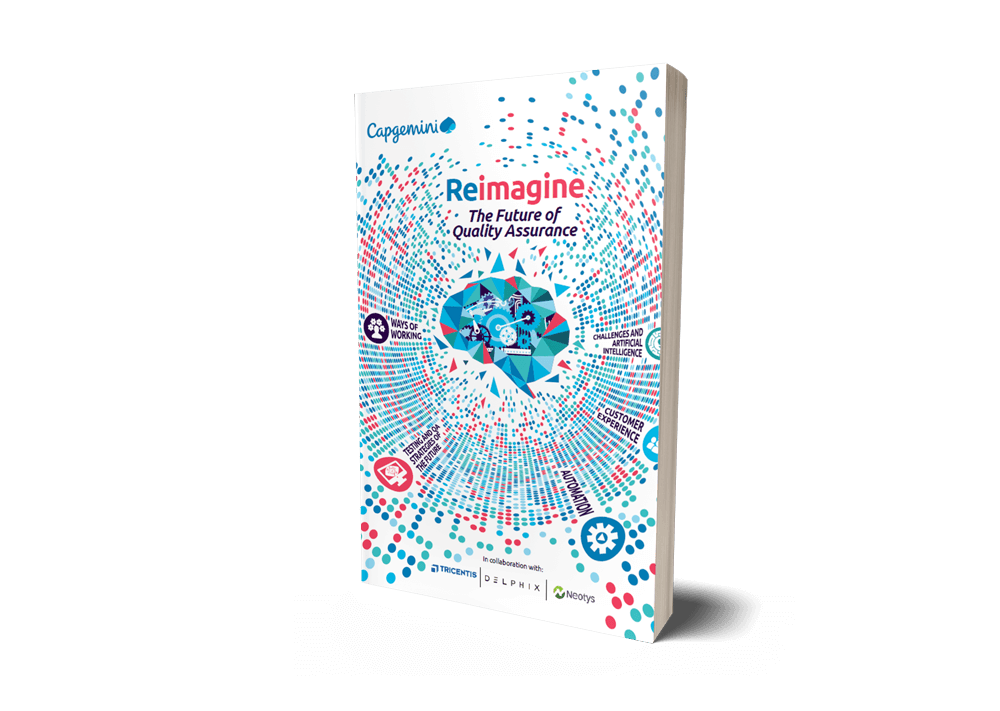
The Forrester Wave™: Autonomous Testing Platforms
As part of its market research, Forrester evaluated 15 autonomous...
An AGL testing leader shares how test automation and service virtualization support their digital transformation.
This blog is part of a series featuring IT leaders who have driven successful quality transformations across organizations such as AXA, Equifax, McDonald’s, and Zurich. These first-hand accounts are excerpted from the Tricentis-sponsored Capgemini report, Reimagine the future of quality assurance.
Uthkusa Gamanayake, Test Capability Manager, AGL
AGL is a utility provider (gas and electricity). It is a leading integrated energy business that has been operating for more than 180 years and has a proud heritage of innovation. AGL is an active participant in gas and electricity wholesale markets with 3.7 million customer accounts, including residential, small and large business, and wholesale customers.
We operate Australia’s largest private electricity generation portfolio, with a total capacity of 10,413MW, accounting for about 20% of the total generation capacity within Australia’s national electricity market.
Customer experience drives everything we do at AGL. Quality Assurance (QA) plays a key role. We encourage innovation and ask our employees to think differently. This brings a competitive advantage. We take calculated risks as long as the results are rewarding for our customers. We find ways to try to implement new technologies as quickly as possible, and we are the first to implement many innovative technologies in Australia. We are an organization living in the future.
With the digital transformation of AGL, testing has changed from a centralized function to a distributed service to support an Agile way of working. Testers are part of scrum teams.
This helps them to work closely with developers and provides opportunities to take on development tasks in addition to testing. The QA responsibility has moved from the Quality Assurance Team to the Scrum Teams. This is a cultural and mindset shift.
There is a trend in the market where some organizations don’t recruit testers anymore. They are looking for test developers. This interplay of roles is critical for successfully transforming from a Waterfall to an Agile way of working. Not only for developers and testers, but also for other roles as well.
There are many tools that can help this shift. Test automation tools and frameworks are a key contributor. In general, all CI/CD-related tools can help.
In relation to processes, Agile has many flavors. Organizations have their own customized versions of Agile practices. This is where things can go wrong. If not done properly, the framework won’t support the interplay of roles, resulting in Waterfall running under an Agile banner.
We can’t talk about testing without automation. AGL’s test automation improved and matured with digital transformation. Certain areas in the organization are more mature than others but overall, the organization has made good progress.
Test automation was initially considered as an “additional task” or something nice to have. It has now become part of the delivery. This is another cultural shift. Individual teams within an organization will use their own automation tools and frameworks that best suit their requirements and platforms. There is no single solution or framework that will work for the entire organization. We should not be trying to standardize test automation. It can slow down delivery.
The automation industry is rapidly changing. New tools with better features are coming to the market. In my view Artificial Intelligence (AI) is the future of test automation. AI will replace some testing roles in the future. Vendors that use AI technology in their tools will dominate the future. AI can and will also play a big role in data mining/creation in the future. This will be a subset of AI’s overall involvement in QA in the future.
Every organization faces test environment challenges. They have an impact on speed and quality, as teams may decide to cut corners to overcome environment issues — that is, issues related to environment availability, environment stability, and data.
One solution organizations are adopting is to move test environments into cloud. This can help as we can develop an automated solution to spin up environments on demand and then shut them down when not in use to save running cost. At AGL, we have made good progress in this direction.
We also need to upskill scrum teams to prevent or detect and fix minor environment issues rather than having an “environment support team” to fix them. Service virtualization is another solution for integration issues.
It is very useful in unit and system testing, especially when testing with third parties. There are testing tools such as Tricentis Tosca coming with test automation and service virtualization capabilities.
Of course, data and privacy policies amplify challenges in building and maintaining test environments. Many organizations hold sensitive customer information and have strict guidelines on how to use that data for testing purposes. You don’t want to mess around with this.
There are a few solutions. Sensitive data masking is one solution. The second option is to create new data instead of using existing data in test environments. Data creation can be automated by test engineers – an automated test script is creating data and running tests using that data. This is where the industry is going.
A good practice is to avoid the use of production data in test environments. Worst case, sensitive and personal data must be masked to protect privacy. Basically, we need to scramble personal information so that the individuals can no longer be identified.
It is also important to block test environments from the outside world where possible, especially in the cloud.
We are using machine learning to improve customer support and enhance customer experience. AI-backed platforms are answering common customer questions and providing basic support. In this way, customers don’t need to wait in a queue to talk to a customer support person.
The Internet of Things (IoT) is a broader concept. Many organizations are using IoT in some form. AGL, as a utility provider, needs to collect large amounts of data from meters at its customers’ premises, and get it transferred and processed quickly and accurately. IoT devices play a major role in this process. Multiple utility industry-specific tools are being used to monitor and support the entire process.
We still need better test automation tools. The majority of the tools in digital testing are open-source. We don’t know the future of these tools. On the other hand, off the shelf tools have limited capability and are expensive. Implementation of these tools can take time and involve costly infrastructure. We need solid, lightweight tools.
Lack of skills in new technologies and tools will be an issue in the future. The testing world is changing rapidly. It will be difficult for the testing community to stay up to date with this rapid development.
There is also another gap in the market. There are many people who can test and provide results, but it is hard to find people who have a vision and can implement it.
The Agile way of delivering autonomy to teams will change the testing world. Testing is part of overall QA. Execution and management will be distributed to teams, and the entire team will be responsible for quality. The role of the tester will move left, with potential development tasks. The developer role will move right, with test automation tasks. We will see more test developer vacancies in the future.
As for the role of head of testing, it will still exist. It won’t go away, but its function will change. This role will have broader QA responsibilities. The head of QA role does exist in some organizations. I think the responsibilities are still limited to testing practices.
The role of testers is changing and new technologies like AI will improve QA as they come on board. AGL is committed to maintaining its forward-looking outlook and its leadership role on this issue.
***
For additional insights from quality leaders, read the complete 100+ page Capgemini report, Reimagine the future of quality assurance. Read more about AGL’s approach to SAP testing in this Tricentis case study.


As part of its market research, Forrester evaluated 15 autonomous...

Scale testing, ensure compliance, and modernize legacy systems with...

Gain unprecedented visibility into your agentic AI toolset with...

Watch our webinar to find out how Tricentis Tosca and Data...

Learn the key elements of a data integrity strategy that can help...

Experts explore why friction persists in even the most advanced...